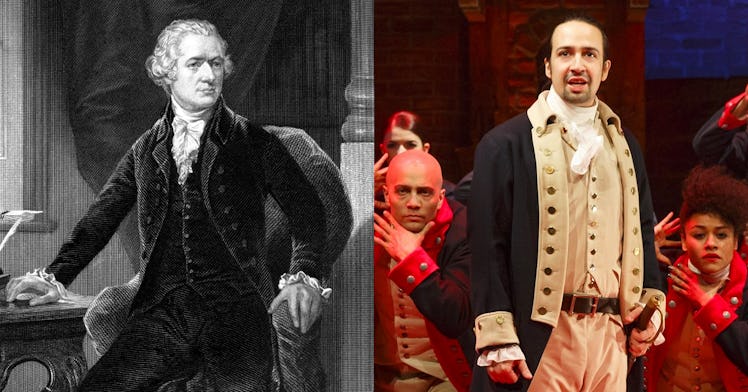‘Hamilton’ And History: The Real Facts About Lafayette, Schuyler, and Laurens
Want to talk to your kids about what really happened? Here's a quick guide to some of your biggest questions.

Hamilton comes to Disney+ weekend and after you’ve finished memorizing the words to every song, you may find yourself wondering how much of what you just saw was actually real? After all, “based on a true story” stories are often very loosely based in truth. So how are you supposed to know what really happened and what was made up for storytelling and dramatic effect? Plus, if you’re watching Hamilton with your older kids, you might be wondering how much real history they’re actually learning. Lin-Manuel Miranda is awesome and everything, but can your kids quote him in history class?
Here are the answers to a few burning questions you will probably have after seeing Hamilton.
Were Hamilton, Laurens, Lafayette, and Mulligan really a friend group?
In the play, Alexander Hamilton meets John Laurens, Marquis de Lafayette, and Hercules Mulligan (coolest name ever) while grabbing a drink with Aaron Burr in New York City in 1776. After agreeing that freedom is good and the British are bad, they all get drunk and become best buds. Sadly, this awesome origin story did not really happen. In fact, while Laurens, Hamilton, and Lafayette all became close during the war, there’s no real evidence that Mulligan ever met Laurens or Lafayette.
Was Lafayette really that awesome?
Simply put, yes, Marquis de Lafayette was as badass in real life as he is on stage. While he may not have been a rapper, Lafayette really had few who matched his “tactical brilliance” on the battlefield. The French freedom fighter came to America when he was only 19 years old, yet he was quickly able to establish himself as a highly-respected figure across the colonies.
During the war, Lafayette survived being shot in the leg in battle and still managed to help convince the French to aid the American cause while being placed in charge of a division of troops. Combined with Hamilton’s forces, Lafayette’s division played a key role in breaking British defenses in Yorktown, which forced them to surrender on October 19, 1781.
Were Angelica Schuyler and Hamilton actually in love?
Probably not but they definitely flirted. In a letter to her sister Eliza, Angelica wrote, “If you were as generous as the old Romans, you would lend him to me for a little while.” Not exactly the kind of thing you’d typically expect someone to say about their sister’s husband. According to Hamilton biographer Ron Chernow, the flirtatious nature of Angelica’s relationship with Hamilton caused rumors to spread that they did have an affair.
However, there doesn’t appear to be much evidence supporting it. After all, like in the play, Angelica spent much of her life living in Europe, only seeing her sister and Hamilton on occasion. Plus, her closeness with Eliza is also well-documented, so it’s more likely that she had a playful but ultimately harmless flirtation with Hamilton.
Did Laurens fight to free slaves?
Laurens was an outspoken abolitionist, vocally criticizing slavery and creating a plan to promise slaves their freedom in exchange for fighting against the British. He was meant to inherit 40 slaves from his father but instead convinced him to let them fight in a brigade.
Most of the other historical figures in Hamilton had a more complicated relationship with slavery. Washington, Jefferson, Madison, and Mulligan all owned slaves. Lafayette owned slaves but eventually became an abolitionist, even proposing a gradual emancipation process to Washington.
As for Hamilton himself, while it does not appear he was a slave owner, historians say that pretending he was anti-slavery is inaccurate. Historian Annette Gordon-Reed wrote that Hamilton bought and sold slaves for his in-laws and that ‘opposing slavery was never at the forefront of his agenda.’
This article was originally published on